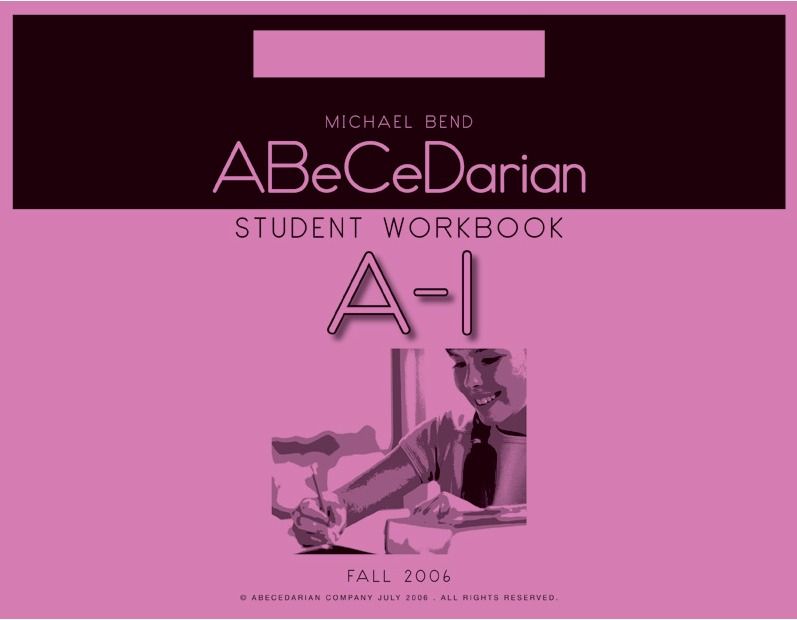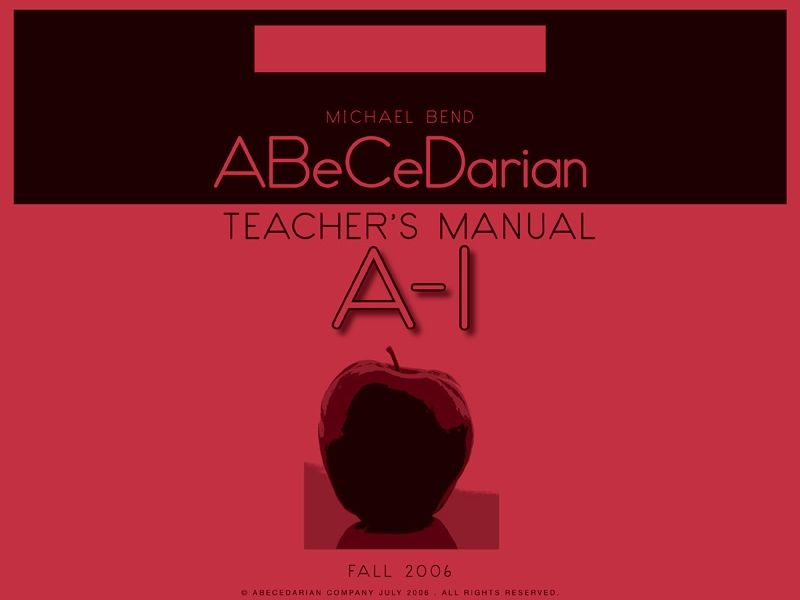Last spring, Jude had an educational evaluation. His spacial skills were borderline "genius." He did fantastic on that portion of the testing. His language skills...well, yeah, we knew they were terrible, but it's still a punch in the gut to be told your child is considered nearly "ineducable." Jude's language issues are no longer considered mere "delays," but "disabilities." Ow. We were not willing to give up on him, and we spent over a year working with a well-known phonics program, trying to learn letters. He could tell you about two-thirds of the alphabet on any given day. It just never was the same two-thirds that he told you yesterday, or the same two-thirds he would tell you tomorrow. I really anticipated reading to be a very hard slog, and set a goal for him to be considered an "emerging reader" by NEXT spring.
Enter ABeCeDarian Company. ABeCeDarian is a multisensory learn-to-read program that focuses on phonemic awareness, not just phonics. Phonemic awareness is definitely a struggle for Jude, and he has a difficult time identifying sounds. This part of the program piqued my interest.
We started with Student Workbook A1 and Teacher Manual A1 ($12.25 and $28.50, respectively).
The very first word we started with was mop. Jude started by using p, m, and o letter tiles to create the word mop. (ABeCeDarian offers download/print/cut out tiles for use with their program, but we used other tiles we already had. Jude was making progress with them because of their size and the way the letters were engraved into the tiles - he was not just visually tracing the letters/sounds but could also feel them.) By using using "Turtle Talk" (a system of elongating sounds), the letters could be indentified as the sounds mmmmmmmm, ooooooooooo and pppppppp and arranged into the word mop. Jude then learned that the sounds /m/, /ɒ/ and /p/ blended to make the word mop. Jude often tends to drop middle and/or ending sounds of words; using ABeCeDarian forced him to verbalize ALL of the sounds in the words, making the word sound /mɒp/ for mop, and not dropping the final /p/ sound and identifying the cleaning tool as a /mɒ/.
One thing I liked about the program is it uses words, not pictures. The word cat is identified as c-a-t, not "Here's a picture of a cat, what sound does that start with? What sound is in the middle? What's at the end?" Jude could see that the word cat is c-a-t, and hear /k/ - /æ/ - /t/, and not have to try to isolate the sounds from memory. but rather could slide the tiles apart into three distinct sounds. This also helped him make sound-to-letter comprehension - "c says /k/, a says /æ/, and there is a /t/ sound at the end; the word is caT, not ca."
At the start of the review period, he could barely just about identify most letters. This is Jude READING WORDS within a week!
Here he is reading the second set of words in Lesson 1:
Even though he stumbles over the word fat, he recovers because he can see the letter /f/ and sound out the word.
 I also like how ABeCeDarian approaches writing as an extension of the sounds -- for example, the program doesn't expect the child to write the letter m-o-p for the word mop, but rather the sounds /m/, /ɒ/ and /p/. This is definitely helpful to Jude because he is often able to tell me the sound that the letter makes, but not the name of the letter. In reading, it's usually the sound that is important, not the "name," so it takes some of the pressure off of knowing both things. He will get there (we are still working on learning letter names), but knowing letters isn't as important as knowing the sounds. It also purposely aligns its penmanship style with the popular Handwriting Without Tears program. We have not used that particular program, but the writing spaces/lines were not difficult for Jude to become accustomed to. I also liked that the Teacher's Manual included instructions for writing letters -- while Jude is getting better with them, sometimes the way they explained it ("rainbow over, line down" for the letter f) made forming some more complex letters make sense to him.
I also like how ABeCeDarian approaches writing as an extension of the sounds -- for example, the program doesn't expect the child to write the letter m-o-p for the word mop, but rather the sounds /m/, /ɒ/ and /p/. This is definitely helpful to Jude because he is often able to tell me the sound that the letter makes, but not the name of the letter. In reading, it's usually the sound that is important, not the "name," so it takes some of the pressure off of knowing both things. He will get there (we are still working on learning letter names), but knowing letters isn't as important as knowing the sounds. It also purposely aligns its penmanship style with the popular Handwriting Without Tears program. We have not used that particular program, but the writing spaces/lines were not difficult for Jude to become accustomed to. I also liked that the Teacher's Manual included instructions for writing letters -- while Jude is getting better with them, sometimes the way they explained it ("rainbow over, line down" for the letter f) made forming some more complex letters make sense to him.Although the Crew reviewed program levels A and B, the entire program contains four levels of instruction, A through D, and is appropriate for students in grades K through 6. Level A-1 is for students who have no reading skills. In addition, there are short "storybook" readers that correspond to the levels for extra practice. (Jude has not yet become proficient enough to use them, but we are looking forward to doing so!) Jude is progressing with some of the activities very slowly -- he still struggles with rhyming/chaining activities (where he needs to swap a letter to make a new word -- ie, changing the f in fat to a c to make the word cat). However, we are absolutely thrilled at his progress and confidence. We are definitely going to be continuing with this program!
Find out what others thought of ABeCeDarian.

©2012- 2013 Adventures with Jude. All rights reserved. All text, photographs, artwork, and other content may not be reproduced or transmitted in any form without the written consent of the author. http://adventureswithjude.com






Meg - that's pretty amazing that Jude has come so far! Great job, Mom! :-)
ReplyDelete